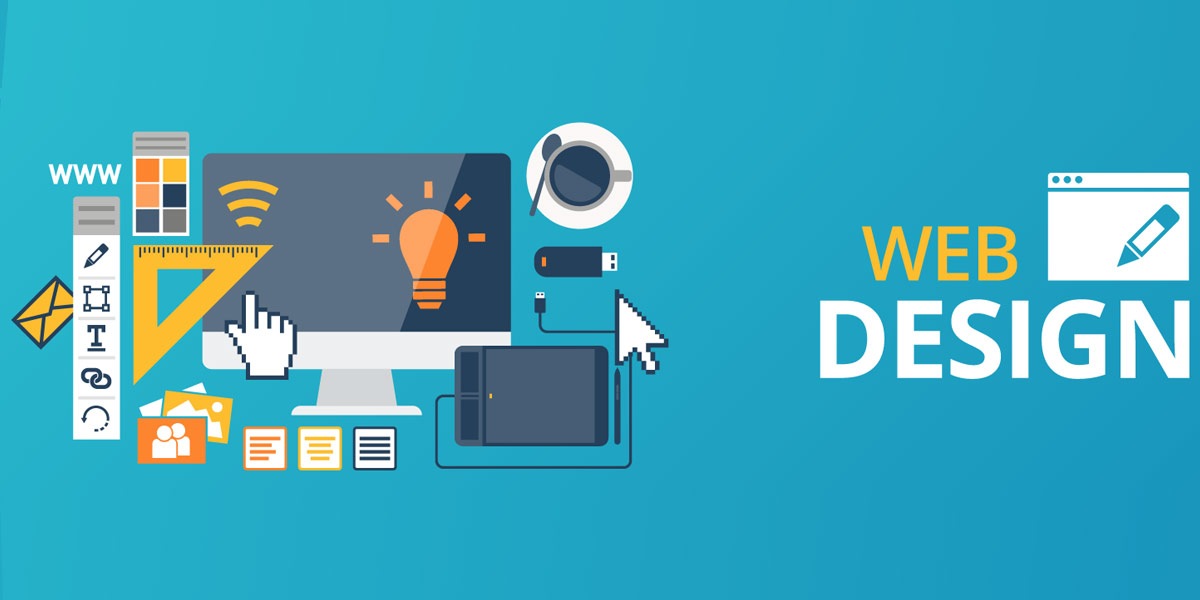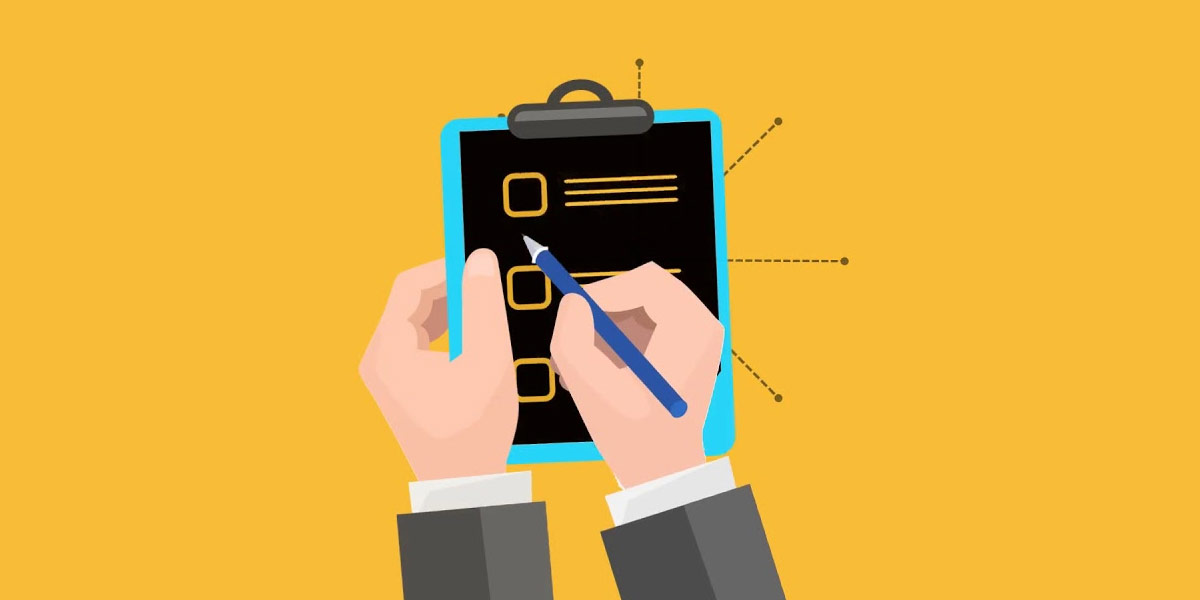
Web Design – What to Learn?
Web design has become an essential skill for businesses and individuals alike. A well-designed website serves as the online face of a brand, allowing it to connect with its target audience, showcase products or services, and establish credibility. To create websites that truly stand out and leave a lasting impact, it is essential to acquire a range of skills and knowledge in web design. In this comprehensive guide, we will explore the key concepts, technical skills, and industry practices that aspiring web designers should learn to excel in their craft.

Web Design – What to Learn: Introduction
Understand the Key Concepts of Web Design
To become a proficient web designer, it is crucial to understand the key concepts that underpin effective web design. This section will cover three fundamental areas:
Visual Design
Visual design plays a pivotal role in web design, as it encompasses the aesthetics and overall look and feel of a website. Understanding the principles of visual design, such as colour theory, typography, and layout, is essential for creating visually appealing and engaging websites. By mastering these concepts, web designers can craft designs that captivate users and effectively communicate brand messages.
Colour Theory
Colour has a profound impact on the user’s perception and emotional response. Understanding colour theory helps web designers create harmonious colour schemes, establish visual hierarchy, and evoke specific emotions. It involves concepts such as the colour wheel, colour psychology, and colour combinations.
Typography
Typography refers to the selection and arrangement of fonts on a website. Choosing appropriate fonts that align with the brand identity and ensuring optimal readability are crucial considerations in web design. Web designers should be familiar with font families, font pairing techniques, and typography best practices.
Layout
The layout determines the arrangement and positioning of elements on a webpage. It involves structuring content, creating visual balance, and guiding the user’s eye flow. Web designers should understand grid systems, white space utilization, and responsive layout principles to create visually pleasing and user-friendly designs.
HTML and CSS
HTML (Hypertext Markup Language) and CSS (Cascading Style Sheets) are the backbone of web design. HTML provides the structure and content of a webpage, while CSS controls its visual presentation. Familiarizing yourself with HTML and CSS is crucial for creating well-structured and visually appealing websites. By understanding these languages, web designers can effectively organize content, format text, and create engaging user experiences.
HTML
HTML is the standard markup language used for structuring content on the web. It provides a hierarchical structure to web pages, allowing web browsers to interpret and display the content correctly. Web designers should have a solid understanding of HTML tags, semantic elements, and best practices for creating accessible and SEO-friendly websites.
CSS
CSS is responsible for the visual styling of a web page. It controls the layout, colours, fonts, and other visual aspects of a website. Web designers need to grasp CSS selectors, properties, and values to apply styles consistently across a website. Additionally, knowledge of CSS frameworks and preprocessors can streamline the design process and improve efficiency.
UX and UI Design
User Experience (UX) and User Interface (UI) design are integral components of successful web design. UX design focuses on understanding and enhancing the overall experience of users when interacting with a website. It involves user research, creating user personas, and designing intuitive and user-friendly interfaces. UI design, on the other hand, deals with the visual and interactive elements of a website. It includes creating buttons, icons, menus, and navigation that are visually appealing and user-friendly. By mastering UX and UI design principles, web designers can create websites that provide exceptional user experiences.
User Research
User research involves understanding the needs, behaviours, and preferences of the target audience. Conducting user interviews, surveys, and usability testing helps web designers gain valuable insights into user expectations and tailor their designs accordingly.
Wireframing and Prototyping
Wireframing and prototyping are essential steps in the design process. Wireframes are basic visual representations that outline the structure and layout of a webpage. Prototypes, on the other hand, are interactive mock-ups that simulate user interactions and workflows. These techniques allow web designers to test and refine their design concepts before proceeding to the development phase.
Usability and Accessibility
Creating user-friendly and accessible websites is of utmost importance. Web designers should ensure that their designs are intuitive, easy to navigate, and compatible with different devices and assistive technologies. Incorporating accessibility guidelines and conducting usability testing can help identify and address potential usability issues.

Web Design – What to Learn: Understand the Key Concepts of Web Design
Learn the Technical Skills of Web Design
While understanding the key concepts of web design is crucial, acquiring technical skills is equally important. This section will cover the technical skills necessary to bring web designs to life and ensure their seamless functionality.
Design Software
Design software plays a vital role in the web design process, enabling designers to create visually stunning and interactive designs. Familiarity with design software enhances creativity, allows for precise design execution, and facilitates collaboration with other team members. Some popular design software tools include:
Adobe Photoshop
Adobe Photoshop is a versatile tool for creating and editing graphics, images, and layouts. It offers powerful features for image manipulation, colour correction, and creating design elements.
Sketch
Sketch is a popular design tool used primarily for creating user interfaces and digital designs. It provides an intuitive interface and a wide range of plugins and integrations, making it a favourite among UI and UX designers.
Adobe Illustrator
Adobe Illustrator is a vector graphics editor widely used for creating logos, icons, illustrations, and other scalable graphics. It enables web designers to create visually appealing and scalable designs that can be easily integrated into websites.
Figma
Figma is a cloud-based design tool that allows for collaborative design work in real time. It offers features for designing interfaces, creating prototypes, and facilitating seamless collaboration among team members.
It’s worth noting that while design software is valuable, it is not a substitute for fundamental design skills and principles. Tools are meant to enhance the design process, but a solid understanding of design fundamentals is crucial for creating impactful designs.
Web Development
Web development skills are essential for implementing designs and bringing them to life on the web. Understanding the core technologies and languages used in web development empowers web designers to create functional and interactive websites. The following are key areas of web development that web designers should learn:
HTML
As mentioned earlier, HTML is the foundation of web development. Web designers should have a strong command of HTML tags, elements, and structure to create semantically correct and accessible websites.
CSS
CSS is closely tied to web development, as it controls the visual presentation of HTML elements. Mastery of CSS allows web designers to apply styling, layout, and animations to create visually appealing and engaging websites.
JavaScript
JavaScript is a powerful scripting language that enables dynamic interactions on web pages. Familiarity with JavaScript allows web designers to create interactive elements, implement animations, and enhance user experiences.
Front-end Frameworks
Front-end frameworks, such as Bootstrap and Foundation, provide pre-designed components and styles that facilitate responsive web design and streamline development. Learning and utilizing these frameworks can significantly enhance the efficiency and speed of web design implementation.
Version Control Systems
Version control systems, such as Git, are essential tools for managing code and collaborating with developers. Web designers should understand the basics of version control to effectively collaborate with developers and ensure the integrity of design implementations.
Take Courses or Certificate Programs
Formal education and structured courses can provide a solid foundation for learning web design skills. Many reputable online platforms and institutions offer courses and certificate programs specifically tailored to web design. These programs cover a wide range of topics, from design principles to technical skills, and often provide practical projects to reinforce learning. Some popular platforms for web design courses include:
Coursera
Coursera offers a variety of web design courses from top universities and institutions. These courses cover topics such as visual design, HTML and CSS, UI/UX design, and responsive web design.
Skillcrush
Skillcrush provides online courses in web design, with a focus on front-end development and UX/UI design. Their curriculum emphasizes practical skills and hands-on projects to ensure real-world applicability.
Interaction Design Foundation
The Interaction Design Foundation offers an extensive library of web design courses and resources. Their courses cover topics ranging from user-centred design to interaction design and provide a comprehensive understanding of web design principles.
Completing courses or certificate programs can not only enhance your knowledge and skills but also demonstrate your commitment and expertise to potential employers or clients.

Web Design – What to Learn: Learn the Technical Skills of Web Design
Workplace and Technical Skills
Becoming a successful web designer extends beyond technical proficiency. This section will explore the workplace and technical skills that contribute to a web designer’s overall effectiveness.
Workplace Skills
While technical skills are vital, workplace skills are equally crucial for a successful web design career. These skills enable effective communication, collaboration, and project management. Some essential workplace skills for web designers include:
Communication
Clear and effective communication is essential for understanding client requirements, collaborating with team members, and conveying design concepts. Web designers should possess strong verbal and written communication skills to ensure effective project execution.
Teamwork
Web design projects often involve cross-functional teams with members from different disciplines. Collaborating effectively with team members, sharing ideas, and receiving feedback are key aspects of successful teamwork.
Time Management
Meeting project deadlines and managing multiple tasks efficiently is essential in the fast-paced world of web design. Web designers should develop strong time management skills to ensure timely project delivery and avoid delays.
Technical Skills
In addition to the core technical skills mentioned earlier, web designers should continuously update their knowledge and stay abreast of emerging technologies and industry trends. Some additional technical skills that can enhance a web designer’s capabilities include:
Responsive Design
With the increasing usage of mobile devices, designing responsive websites that adapt to different screen sizes is imperative. Web designers should learn responsive design techniques and frameworks, such as media queries and Bootstrap, to create websites that provide a seamless experience across devices.
SEO Principles
Understanding the basics of search engine optimization (SEO) helps web designers create websites that are optimized for search engines. This includes considerations such as proper use of headings, meta tags, structured data, and site speed optimization.
Performance Optimization
Web designers should be familiar with techniques for optimizing website performance, such as image optimization, caching, and minification. By ensuring fast-loading websites, designers can deliver optimal user experiences and improve search engine rankings.
User Testing and Analytics
Gathering user feedback and analyzing website performance is essential for iterative improvement. Web designers should be familiar with user testing methodologies, heatmaps, and analytics tools to collect data and make informed design decisions.

Web Design – What to Learn: Workplace and Technical Skills
Conclusion
Becoming a skilled web designer requires a combination of artistic flair, technical expertise, and an understanding of user-centric design principles. By mastering the key concepts of visual design, HTML, CSS, and UX/UI design, you can create exceptional websites that captivate users and deliver outstanding user experiences. Acquiring the necessary technical skills, staying updated with industry trends, and honing your workplace and technical skills will position you for success in the dynamic field of web design. Remember, web design is an ongoing learning journey, and continuous improvement is key to staying ahead in this ever-evolving industry.
FAQs
What are the key concepts of visual design in web design?
The key concepts of visual design in web design include colour theory, typography, layout, and visual hierarchy. These elements contribute to creating visually appealing and engaging websites.
What are the basics of HTML and CSS?
HTML (Hypertext Markup Language) is the standard markup language used to structure the content of web pages. CSS (Cascading Style Sheets) is a style sheet language that defines the visual presentation of HTML elements. Understanding HTML and CSS is essential for web designers to create and style web pages.
What is the importance of UX and UI design in web design?
UX (User Experience) and UI (User Interface) design are crucial aspects of web design. UX design focuses on enhancing user satisfaction by improving usability, accessibility, and the overall experience of interacting with a website. UI design deals with the visual and interactive elements of a website, including layouts, buttons, and navigation. Both UX and UI design contribute to creating intuitive and user-friendly websites.
What design software should I learn for web design?
There are several design software tools commonly used in web design, such as Adobe Photoshop, Sketch, Adobe Illustrator, and Figma. These tools offer various features and functionalities to create and edit visual elements for websites. It’s beneficial to learn one or more of these software tools to enhance your design capabilities.
What are the technical skills needed to create a website?
To create a website, you need technical skills such as HTML, CSS, and JavaScript. HTML provides the structure and content of the web page, CSS is used to style and lay out the elements, and JavaScript adds interactivity and functionality to the website. Additionally, knowledge of responsive design, SEO principles, and performance optimization is valuable for creating effective websites.
What are the workplace skills needed to become a successful web designer?
Becoming a successful web designer requires strong workplace skills. Communication skills are essential for understanding client requirements and collaborating with team members. Teamwork skills help in working effectively with colleagues from different disciplines. Time management skills are crucial for meeting project deadlines and managing multiple tasks efficiently.
What are the technical skills needed to become a successful web designer?
Technical skills play a vital role in the success of a web designer. Proficiency in HTML, CSS, and JavaScript is fundamental for creating functional and interactive websites. Additionally, skills in responsive design, SEO optimization, and user testing and analytics are valuable for delivering high-quality web designs.
What courses or certificate programs can I take to learn web design skills?
Several online platforms offer courses and certificate programs in web design. Coursera, Skillcrush, and Interaction Design Foundation are popular platforms that provide comprehensive web design courses. These courses cover topics ranging from visual design principles to HTML, CSS, UX/UI design, and responsive web design.
What are the essential skills needed to become a successful web designer?
Essential skills for a successful web designer include a strong understanding of design principles, proficiency in HTML, CSS, and JavaScript, knowledge of design software, UX/UI design, responsive design, and effective communication and teamwork skills.
What are the most important technical skills for web designers to have?
The most important technical skills for web designers to have include proficiency in HTML, CSS, and JavaScript. These languages form the foundation of web development and allow designers to create engaging and interactive websites. Additionally, skills in responsive design, SEO optimization, and familiarity with design software are highly valuable in the field of web design.

With over two decades of web design and development expertise, I craft bespoke WordPress solutions at FallingBrick, delivering visually striking, high-performing websites optimised for user experience and SEO.




